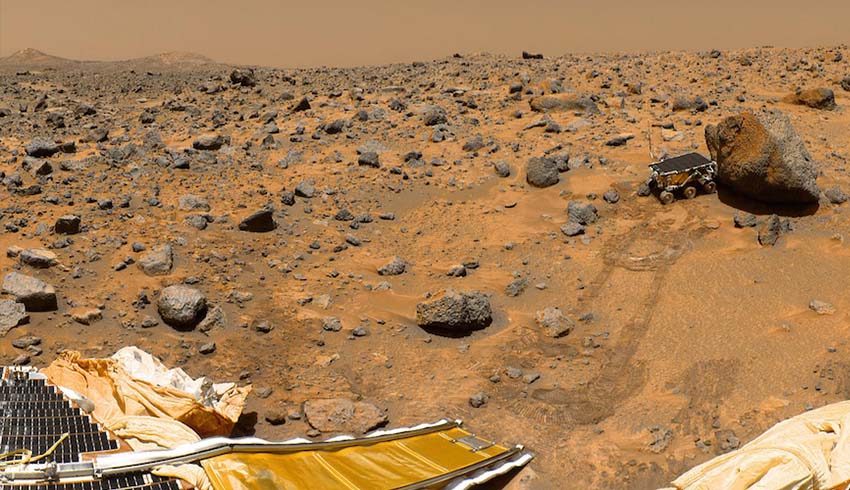As well as lots of red dirt, the Pilbara is also home to some interesting fossils.
"The Pilbara outback is home to the oldest confirmed fossilised lifeforms on Earth, called stromatolites," said Ken Farley, project scientist for Mars 2020 at the NASA Jet Propulsion Laboratory in Pasadena, California.
"If we can better understand how these fossils came to be here — and the nearby geological signposts that help point the way to them — we'll be that much more prepared when hunting for signs of life on Mars."
The Mars 2020 mission is scheduled to launch in July next year and land on Mars in February 2021.
The one-tonne, six-wheeled Rover will carry a range of instruments to examine the Mars surface, atmosphere and climate, and to detect organic compounds and indications of past life. It even carries a small drone to scout the best travel route.
It will collect samples for collection and return to Earth in a future uncrewed mission, a prerequisite for an eventual crewed mission.
The field trip to the Pilbara was led by Martin Van Kranendonk, professor of geology and astrobiology at the University of NSW.
"Just as the Apollo astronauts visited areas of geologic interest on Earth before they journeyed to the moon, the scientists of Mars 2020 and ExoMars are doing their due diligence before their missions make the 160-million-plus-kilometre trip to the Red Planet," said Mitch Schulte, Mars 2020 program scientist at NASA Headquarters in Washington.
"Martin helped them by providing a thorough and thought-provoking look into the geologic features of the Pilbara."
For the Pilbara trip, NASA scientists teamed up with their counterparts from the joint European-Russian ExoMars mission to hone their research techniques.
The researchers know that any proof of past life on Mars will more than likely be almost microscopic in size and that's where the Pilbara comes in.
The launch window for Mars 2020 opens on 17 July 2020. It will land at Mars' Jezero crater on 18 February 2021.
Launch window for ExoMars opens 25 July 2020 and it will land on the Red Planet in March 2021.
JPL is building and will manage operations of the Mars 2020 rover for the NASA Science Mission Directorate.
NASA plans to establish a sustained human presence on and around the moon by 2028 through NASA's Artemis lunar exploration plans. The ExoMars program is a joint effort between the European Space Agency and the Russian Federal Space Agency (Roscosmos).

